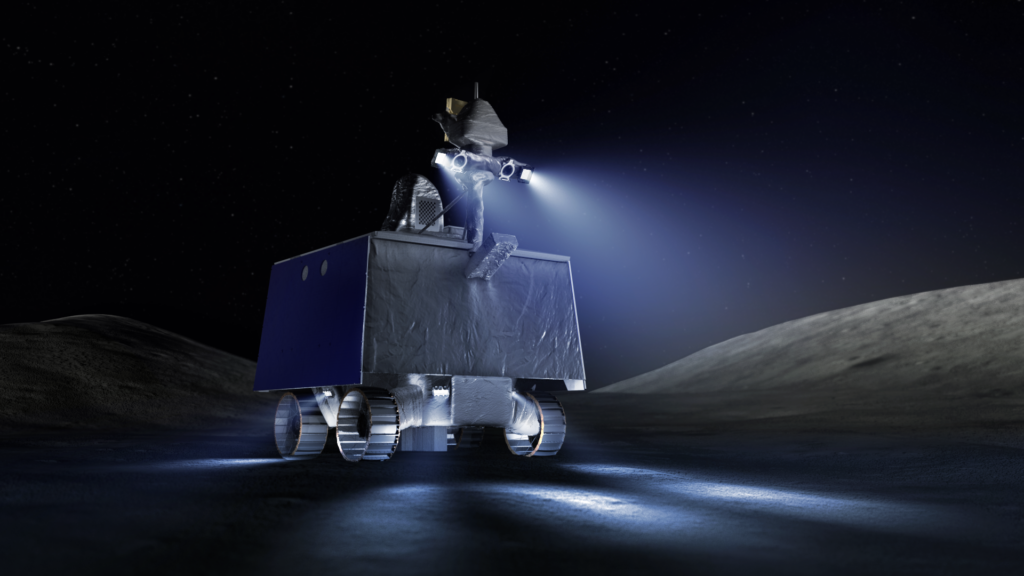NASA has released a video showing a new test of the VIPER lunar rover. Within its framework, engineers worked out the exit of the vehicle from the landing platform to the lunar surface.
Technical mechanism and main tasks of VIPER
VIPER is the first lunar rover built by NASA. Its length and width are 1.5 m, height — 2.5 m, weight — 450 kg. The vehicle will move with the help of four wheels. Its maximum speed will be 0.72 km/h. To generate energy, VIPER will be equipped with solar panels capable of generating 450 watts. The energy stored during the lunar day will be used to keep the vehicle from freezing during the long lunar night. The duration of the mobile laboratory should be at least 100 days.

The main task of VIPER is to study the lunar soil to determine the amount of water ice contained in it. The lunar rover should land on the western edge of the 73-kilometer-long Nobile crater. It is located near the south pole of the moon and its bottom is never illuminated by the Sun.
To search for water ice, the lunar rover will use a drill that allows it to extract samples from a depth of up to a meter, and three scientific instruments. The NSS neutron detector will help to identify places of probable ice occurrence, the MSolo and NIRVSS spectrometers will help to determine the chemical composition of the regolith. VIPER will also be the first lunar rover to have headlights installed to work in low light conditions.
Intensive NASA tests
The key to the success of the mission is the VIPER’s ability to overcome various obstacles on the lunar surface and move in places with difficult terrain. In order to test in practice what the rover can handle, its prototype undergoes a series of intensive tests aimed at determining the limit of its capabilities. Within their framework, the VIPER has already passed a real obstacle course, and engineers have tested all the “worst-case” scenarios of its landing, including cases of high roll and steep descent.
On a roll!
Our VIPER rover prototype is practicing rolling out of its lunar lander at @NASA_Johnson. The rover is set to arrive near the Moon’s South Pole in late 2024, near the landing site of future @NASAArtemis astronauts: https://t.co/Ap8V1hj36D pic.twitter.com/JUfw6LJmSH
— NASA (@NASA) September 5, 2023
The next step was the tests of the lunar rover’s exit from the landing platform to the surface. Engineers again tested a number of possible scenarios with different ramp angles.
NASA specialists have already started manufacturing a flight copy of the VIPER. Its launch is scheduled for November 10, 2024. The rover will be sent to the Moon by a Falcon Heavy rocket. The Griffin platform, built by Astrobotic, will be used to land the VIPER at the South Pole.
Follow us on Twitter to get the most interesting space news in time
https://twitter.com/ust_magazine
